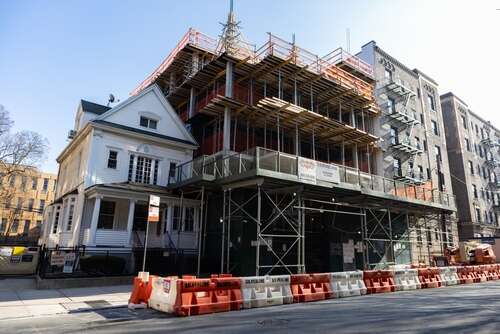
The US real estate landscape has been undergoing a transformation, with apartment construction reaching unprecedented levels in recent years. Bolstered by the pandemic-induced building boom, the nation’s rental housing market has surged, delivering 1.2 million new apartments over the past three years, according to a new report.

As 2023 unfolds, the momentum remains strong, positioning this year as a pinnacle for construction activity. Developers are poised to bring 460,860 new rental units to the market by the end of December. While New York‘s metro area takes the lead, other high-growth regions like Dallas and Austin, Texas, are following, albeit at a distance.
A construction renaissance amid economic headwinds
The annual apartment construction report, crafted from Yardi Matrix‘s comprehensive data, underscores the construction spree sweeping the US. Forecasts reveal that this pace will continue until 2025 when the ripple effects of economic headwinds might impact construction. These past three years have ushered in an era of building activity that harkens back to the monumental boom of the 1970s, fuelled by a surge in household growth following the pandemic.
The surge in apartment demand stems from a confluence of factors. As job growth surged post-pandemic, a wave of young adults moved out of their parental homes. Remote work became the norm, prompting renters to create their own households, seeking more spacious accommodations to accommodate home offices, family needs, and pets. Developers embarked on a tireless mission to complete projects approved during the pandemic’s height to cater to the evolving needs of a population embracing hybrid work models.
Distribution and demographics
Notably, about two-thirds of the apartments built during this surge are concentrated in the 20 fastest-growing metropolitan areas, which collectively represent around 41% of the total renter population in the US. However, this influx of new supply had a more marginal impact on markets beyond these high-growth hubs. A staggering 89% of the completed apartments fall into the high-end category, appealing predominantly to upper-middle and high-income renters.
Analysing the top metro areas for apartment construction since 2020 reveals Dallas taking the lead, trailed by New York and Houston in second and third places, respectively. The city-level focus zooms in on Austin, Texas, emerging as a prime player with the most apartments constructed over the past three years. Surprisingly, New York’s boroughs missed the top 20.
While the construction boom has been remarkable, the forthcoming years pose challenges. A projected 15% year-over-year decrease in new apartment completions looms, dwindling from 484,000 units in 2024 to 408,000 in 2025, bottoming out at around 400,000 units in 2026. Yardi Matrix’s estimations suggest a gradual recovery in construction pace by 2027 and 2028.
New York’s ongoing lead and Texas titans
The New York metro continues its remarkable performance in apartment construction. A staggering 33,000 units are set to be introduced in 2023 alone, with a significant proportion located in Brooklyn, reflecting the pent-up demand for housing in the region. This construction frenzy is a direct response to New York’s long-standing housing shortage, further amplified by the unique challenges of the pandemic era.
Dallas and Austin, Texas, have been at the forefront of the construction surge, reflecting their economic dynamism and population influx. With staggering numbers of new residents relocating, developers are racing to address the housing shortage. Utilizing vacant land and streamlining the permitting process are key strategies to potentially create up to 100,000 new apartments, alleviating the scarcity.
The housing frenzy is particularly pronounced in sought-after metros like Miami, where 24 renters compete for each available unit. Despite robust construction efforts, the supply still lags behind the soaring demand, signalling the need for sustained building activity to balance the market.
[Read more: Miami, LA and New York top list of US cities with most ‘house poor’ homeowners]






